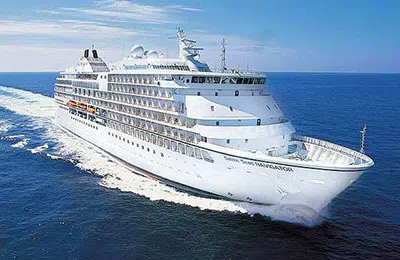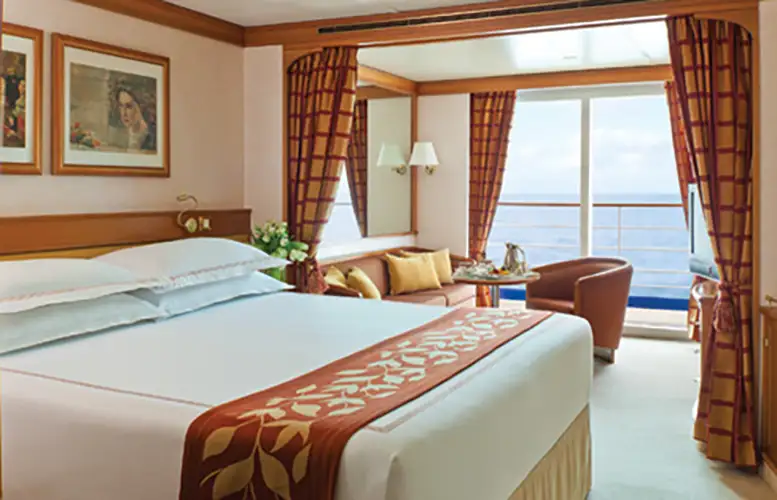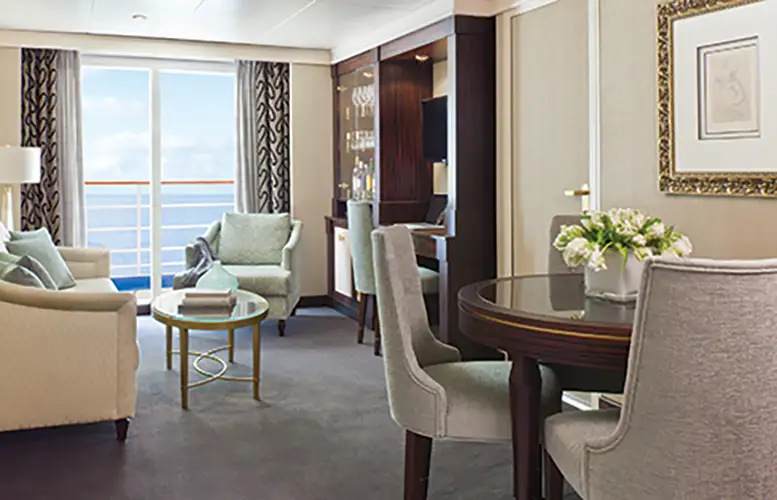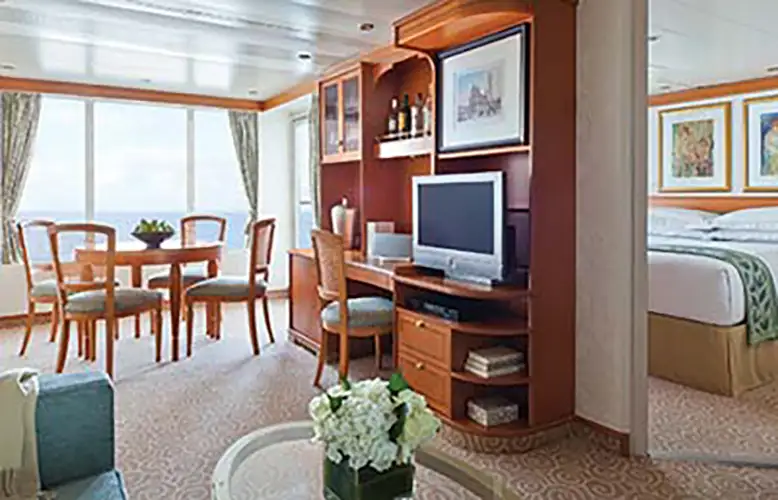Regent Mediterranean: 10 nights from Venice with Seven Seas Navigator
Sep 12, 2026
Italy, Croatia, Montenegro, Albania, Greece
Cruise itinerary
Departure Port: Venice ➞
Landing: Athens
-
Saturday, September 12, 2026 - 7:00 PMVenice
-
Sunday, September 13, 2026 8:00 AM - 6:00 PMRijeka
-
Monday, September 14, 2026Navigation
-
Tuesday, September 15, 2026 7:00 AM - 5:00 PMZadar
-
Wednesday, September 16, 2026 10:00 AM - 7:00 PMDubrovnik
-
Thursday, September 17, 2026 8:00 AM - 5:00 PMKotor
-
Friday, September 18, 2026 8:00 AM - 6:00 PMSaranda
-
Saturday, September 19, 2026Navigation
-
Sunday, September 20, 2026 8:00 AM - 6:00 PMZante
-
Monday, September 21, 2026 8:00 AM - 6:00 PMGytheio
-
Tuesday, September 22, 2026 5:30 AM 7:00 PMAthens
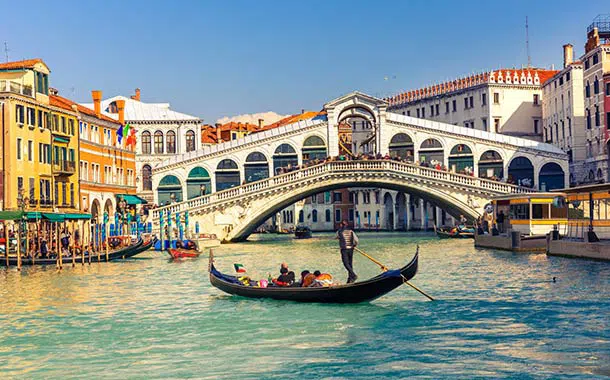
Venice
Setting sail from Venice on a cruise ship is unique and unforgettable. Discover all the cruises that depart from Venice for a great start to your holiday!
Venice it is one of the golden destinations of our age. A unique city of 120 islands, with an ancient history and endless waterways, it attracts a constant flow of tourists from all over the world to see its inspiring architecture and navigate its canals.
There are many souvenirs you can bring home from Venice, but the most lasting memory will be your impression of the city itself.
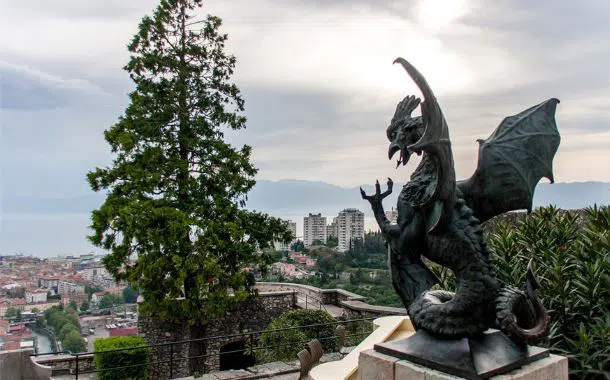
Rijeka
Rijeka is a Croatian seaport and city located in the Gulf of Kvarner, on the Adriatic coast. It is the third largest city in the country.
Before being annexed to the Yugoslav Republic in the twentieth century, it underwent Austro-Hungarian and later Italian dominations at the end of the nineteenth century. Today, the country has an excellent shipbuilding industry.
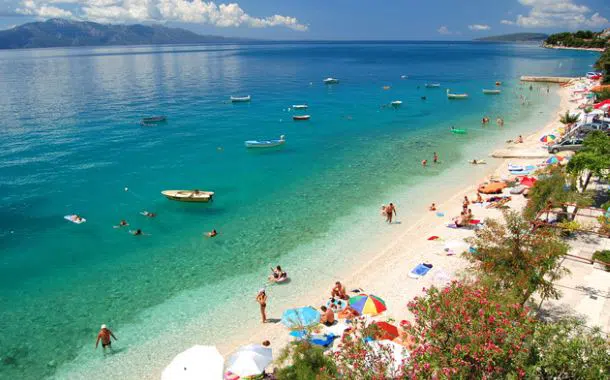
Zadar
Thanks to its geographical position, its beaches and attractive environment Zadar is an ideal destination for visiting the Dalmatia. Icing on the cake: the sunset would be the best in the world according to Alfred
Hitchcock.
Regional capital of northern Dalmatia, Zadar is a small coastal city in Croatia protected by lots of islands of the Kornati archipelago, one of the largest in the Mediterranean. If you want to enjoy your stay in this enchanting country, May, June and September are the most ideal times. A peaceful atmosphere is emanated from this ancient walled city. Surrounded by the sea and numerous pebble beaches, in the territory there are many national parks, in particular the most notably are the Plitvice Lakes, the Krka waterfalls and Velibit Mountain. Even after getting to know the city, you can admire the islands of the Kornati National Park, where you will find a labyrinth of untouched oases. This blessed place of the gods is ideal for diving and snorkling.
The surprising feature of Zadar: it is the only city in the world with a
marine 'organ', the waves produce a sound similar to the instrument used in the church. This is a further reason to discover this city rich in history and full of charm. This island has been inhabitaed for more that three decades, this is testifyed by its magnificent historical and archelogist ruins for example the 9th century monastery of San Donato, the 16th century Venetian bastions or the Porta della Terraferma, both Venetian. The central arch is decorated with a statue of St Chrysogonus, the patron saint of the city, these are just some of the places to visit. If you also plan to have fun, you will find several summer cultural events here, including Zara of Dreams or the musical nights of San Donato. For party-goers, we recommend one of the most famous clubs in Croatia, the Hacienda, which always hosts famous DJs and it is located between Zadar and Šibenik. While for liquors lovers, especially local ones, you can enjoy a typical local Maraschino in the evening.
The capital of Dalmatia, Zadar, is a small coastal city, located in Croatia and protected by numerous islands of the Kornati archipelago, one of the largest in the Mediterranean. If you want to enjoy your stay in this enchanting country, May, June, and September are the most ideal period. In this ancient walled city emanates a peaceful atmosphere. Surrounded by the sea and numerous pebble beaches, the territory has various national parks, in particular, the Plitvice Lakes, the Krka waterfalls, or the Velibit mountain. Even after knowing the city, you can contemplate the islands of the Kornati National Park, where you will find a labyrinth of pristine oases. This place blessed by the gods is ideal for diving and snorkeling. The striking feature of Zadar: it is the only city in the world with a "sea organ", the waves produce a sound similar to that of the instrument used in the church. One more reason to discover this coastal city rich in history and full of charm. This region has been inhabited for more than three millennia, as evidenced by the magnificent historical and archaeological finds. The monastery of San Donato of the 9th century, the Venetian bastions of the 16th century or the Porta della Terraferma, also Venetian. The central arch is decorated with a statue of San Crisogono, patron saint of the city, these are just some of the places to visit. If you also plan to have fun, here you will find several summer cultural events including Zadar of Dreams or the musical nights of San Donato. For partygoers, we recommend one of the most famous clubs in Croatia, Hacienda which always hosts well-known DJs, is located between Zadar and Sibenik. While for lovers of liqueurs, especially the local ones, in the evening you can enjoy a Maraschino typical of the area.
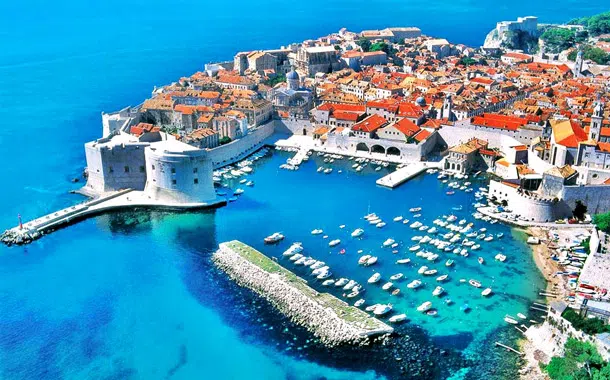
Dubrovnik
Dubrovnik is definitely special. A magnificent curtain wall surrounds marble streets and Baroque buildings exude a pearly light in the Adriatic sun.
Picturesque and artistic, Dubrovnik is a tourist hotspot and port in southern Dalmatia, at the foot of the Srđ mountain. From a historical and cultural point of view, it has been included in the list of UNESCO World Heritage Sites.
Thanks to its beauty and everything it has on offer for tourists, Dubrovnik is one of the most attractive destinations in the Mediterranean, so much so that the city can be visited all year round. In addition to its world-famous architectural heritage, this place has beautiful rocky beaches, pebble beaches and sandy beaches, enjoys a Mediterranean climate and also has lush vegetation. The main pedestrian street, Placa, is a melange of cafes and shops with monuments at each end.
Churches, monasteries and museums adorned with finely carved stone, recall an eventful history and a rich artistic tradition. Beyond the city there is a paradise of beaches, wooded peninsulas and a crystal-clear sea dotted with lush islands.
The city is also known for its delicious cuisine and its infrastructure of hotels for tourists. The city offers a wide selection of first-class restaurants, numerous sport and leisure activities, as well as cultural and entertainment events
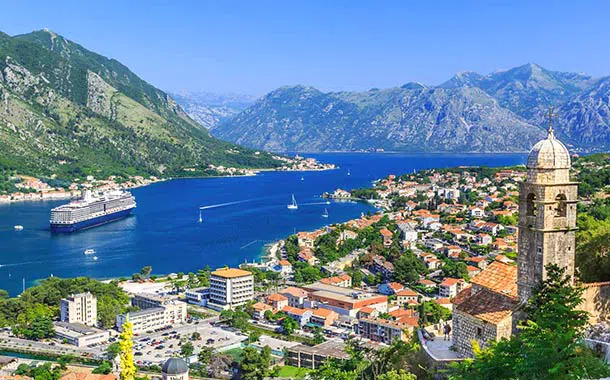
Kotor
The Adriatic Sea penetrates the jagged coast of Montenegro and winds between high mountains until it meets the exquisite and walled medieval city of Kotor.
Along the Adriatic coast of the former Yugoslavia, we find one of the most unique and fascinating European coastal areas, the city hidden in Montenegro, Kotor.
Located at the bottom of a bay, the beautiful medieval city of Kotor is considered a Mediterranean location surrounded by cliffs and an interesting historic wall. The tourist attractions of Kotor are easily reached with a pleasant walk. This small walled city, declared a UNESCO World Heritage Site, has compact dimensions that make it comfortable and easy to visit.
The central part of Kotor was built between the XII and XIV centuries. A historic center surrounded by a rather thick wall, four and a half kilometers long and fifteen meters high. This immense fortified wall reaches the bastion of Sveti Ivan (San Giovanni).
Inside the walls, it preserves an urban network cut into the stone. Its most emblematic work is the Cathedral of San Trifone, built in the 12th century. Inside the church it contains objects and frescoes sculpted during the 14th century. Furthermore, The Orthodox Church of San Nicolas, built between 1902 and 1909 in neo-Byzantine style and that of San Luca (13th century) built in Romanesque and Byzantine style.
Together with the churches, the city includes many palaces that tell its history: the Maritime Museum, located in the Grgurina Palace, a splendid baroque building located in the historic center of the country. The Drago house, with its beautiful Gothic windows, the Prima building, where Renaissance and Baroque lines are combined, the Ducal Palace and the Bizanti, both from the 17th century and the Napoleonic theater in the 19th century.
In Kotor, it is very common to see locals located along the rocky coast in the lower part of the city. In the old part of the area you will find many shops and restaurants that will delight your eyes. This location is the classic ideal city to spend quiet days or for a romantic getaway.
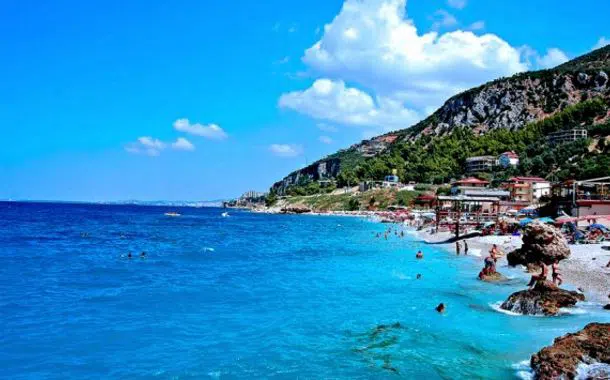
Saranda
Located in the extreme south-west of Albania along the Ionian Sea, opposite the Greek island of Corfu, Saranda is a popular Albanian city, one of the most important tourist cities on the Ionian coast.
The most welcoming and tourist city in Albania, draped along a curved bay with a thin strip of beach. The city developed in antiquity, from the 2nd and 3rd centuries AD, archaeological excavations have revealed the remains in the center of the metropolis.
Despite its lack of popularity, it has a fascinating heritage: a promenade decorated with palm and eucalyptus trees, surrounded by numerous clubs.
The beaches also offer the opportunity to practice numerous water activities.
One of the most beautiful beaches is Kakome Bay north of Seranda: The beach is huge, absolutely stunning.
Blue Eye is a lagoon, so called thanks to its turquoise shades similar to the color of the iris of an eye. At 45 meters deep, the water is incredibly transparent.
Ksamil is a small village near Saranda (15 km) and also has a beautiful beach surrounded by small islands accessible by swimming.
Castle Lekures dating back to the 16th century is located on the hills of Saranda and offers panoramic views of the Ionian Sea. The dominant position of the castle was a strategic point for protecting the city from invasions: on one side the sea and on the other a large tray suitable for cultivation and breeding. The castle has a splendid terrace and a restaurant. It is reachable by car or on foot.
The Butrint National Heritage Park World Heritage by UNESCO, is a natural park, rich in wildlife such as foxes, reptiles, martens, seals, turtles and various birds. The climate is mild and sunny for most of the year. The economy of the city of Saranda is mainly based on agricultural products from the Valtos valley, on the cultivation of mussels from the salt lake of Vouthrotos (Butrint).
In addition to the slow and constant growth of tourism, fishing is another source of wealth.
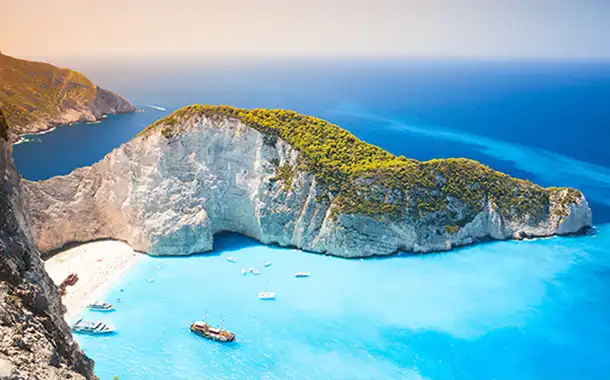
Zante
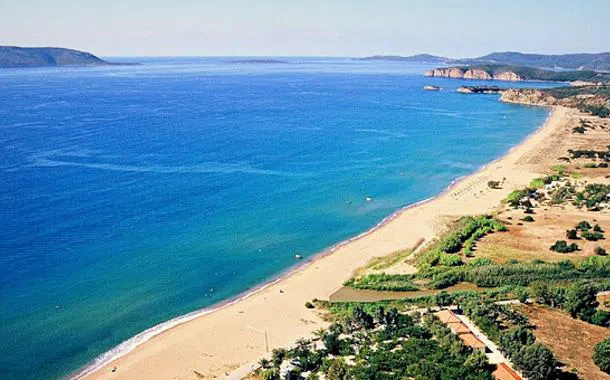
Gytheio
Located south of the Peloponnese, the city of Gytheio (or Gythion) is located north of the Gulf of Lakonia. The cosmopolitan atmosphere, the landscape of a unique island, and the variety of choices are the first impressions of visitors arriving in this paradise, formerly known as the land of the Gods. Gytheio was the port of the ancient city of Sparta and soon developed as the main export center of Laconia. On the hill, north of the village, the ruins of the citadel reside. At the foot of the hill is the ancient theater which still hosts numerous cultural events. Ornamented by various Roman constructions, associated with the mountains and the sea, it gives a prestigious natural landscape. All this wonder is combined with neoclassical buildings, with the addition of the small and charming fishing port. The beaches here are fantastic (many awarded with blue flags), especially those of Mavrovouni and Selinitsa, where you can swim and try different water sports such as windsurfing. Many cultural events take place during the summer, with music festivals, theatrical performances, and attractions for young people. The summer ends with the start of the traditional fair on September 14th which lasts for a week and, subsequently, on September 30th near the port. 10 km from Gytheio, on the road to Areopolis, there are the ruins of Passava castle, built in the early years of the conquest of the Peloponnese by the Franks, constituting the base of their barony. Don't forget to visit Trinissa, a wonderful complex of islands that provide a secluded, relaxing, and natural place.
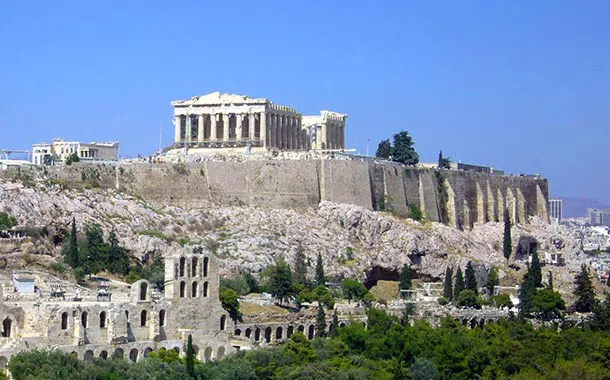
Athens
For many, Athens is a city lived two thousand five hundred years ago. Symbol is the mighty Acropolis which dominates almost every view and itinerary of every visitor, crowned by the iconic Parthenon, stands above the city, watching the sprawling modern metropolis in evolution.
Athens, the capital of Greece, is a city where antiquity and modernity, history and contemporary culture blend in a unique way. Everyone knows that the name of the city derives from the ancient Greek goddess of wisdom and justice. However, few people actually know the legend behind this event. According to myth, Athena and Poseidon, the God of the seas, vied for the right to name the city. Poseidon, to impress the inhabitants, gave them water, while Athena gave them an olive branch.
At first the choice fell on Poseidon, since the citizens considered water the most precious gift. When, once they tasted the water, they discovered that it was salty and not drinkable, they changed their minds and recognized Athena as their patron. One of the most famous historical sites in the city is the Acropolis, a majestic hill topped by ancient Doric temples, including the Parthenon, built in 477 BC. and the Erechtheion, built between 421 and 406 BC. Climbing the Acropolis, tourists can enjoy a breathtaking view of the city and the Aegean Sea. However, Athens is not only history, but also a lively cultural capital. In the Plaka district, located at the foot of the Acropolis, it is possible to stroll through the welcoming streets, visit the traditional Greek taverns and enjoy the authentic atmosphere.
Then there are the numerous cultural activities offered by the numerous museums, galleries and theaters present in the city. Athens is an important port for cruise ships that offer trips to the Mediterranean and beyond. Cruises from Athens allow guests to explore the rich cultural heritage of Greece, including the islands of Crete, Santorini and Mykonos, where you can admire the crystal clear waters of the Aegean Sea and a coast of white houses.
In addition to the Greek islands, cruises from Athens also offer the opportunity to visit other exciting Mediterranean destinations, including historic cities in Italy, Croatia and Turkey. Athens is therefore not only the historical and cultural center of Greece, but also an important starting point for cruises in the Mediterranean, which offers guests the opportunity to immerse themselves in the great history and splendid landscapes of this unique region.
Many still think of Athens as an ancient city that thrived two and a half thousand years ago. Its symbol is the mighty Acropolis, which dominates almost every view and the itinerary of every visitor, and it is crowned by the iconic Parthenon, which rises above the city, overlooking the sprawling and evolving modern metropolis.
Perhaps the most significant change is in the historical centre, which is almost unrecognisable since cars have been banned. This has liberated the area with the most significant archaeological sites, creating the longest, and undoubtedly one of the most splendid, pedestrianised zones in Europe. This huge archaeological park has brought past and present together, returning the cultural and social life of the city to the area around the ancient monuments and surrounding neighbourhoods.
Athens remains a city of contradictions; it is both frustrating and seductive. It is the oldest city in Europe, yet still in a state of transition. It is one of the safest and most vibrant European cities - an intoxicating mix of grunge and grace with an undeniably urban soul.
